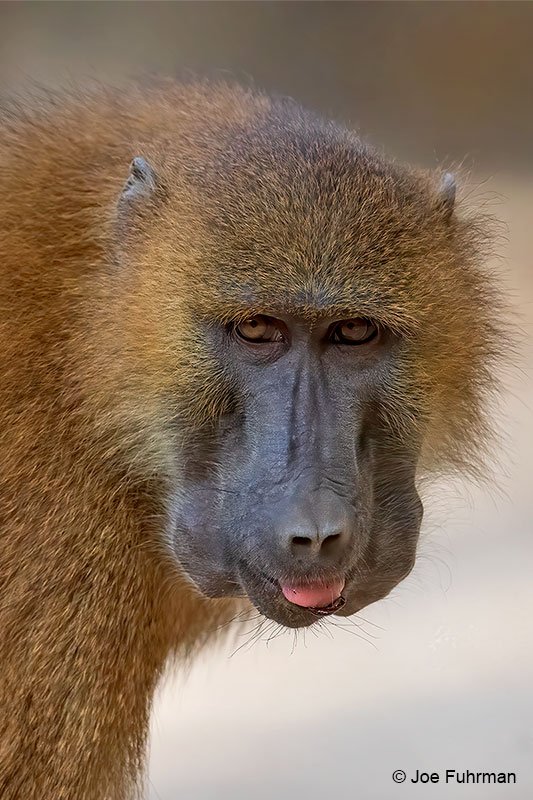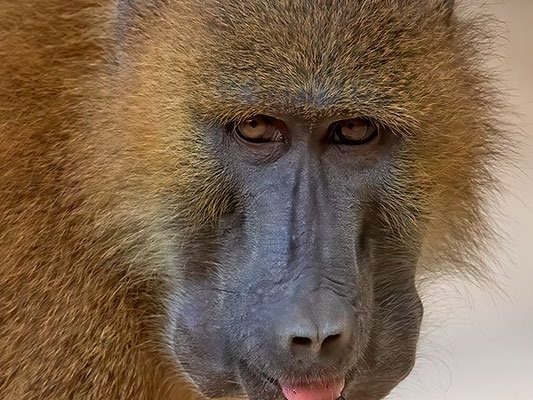
You might be wondering, “What’s going on with the Guinea baboon today?” Well, let’s dive into the world of conservation and explore just how endangered these creatures are. From habitat loss to poaching and the impact of climate change, understanding these challenges is vital for their survival. Together, we can uncover the pressing issues surrounding Guinea baboons and what’s being done to help them thrive.
What Are Guinea Baboons?
Guinea baboons, known scientifically as *Papio papio*, are medium-sized primates native to West Africa. They inhabit various environments, including savannas and woodlands. Unlike some of their relatives, Guinea baboons are easily recognized by their stocky build, thick fur, and unique facial features, including long muzzles and expressive eyes.
These baboons live in groups, or troops, which can consist of anywhere from 10 to 50 individuals. Social structures within these troops can be quite complex, marked by strong bonds and hierarchies. For instance, female baboons typically remain in their birth troops, while males often leave to find new groups. This social dynamic helps ensure genetic diversity, which is essential for the overall health of the population.
Interestingly, Guinea baboons are known for their adaptability. They can be seen foraging for food, climbing trees, and even using stones as tools—showcasing their intelligence and resourcefulness. But as cute as they are, the reality is that their future hangs in the balance.
Current Conservation Status
You might be asking, “What’s the current status of Guinea baboons in the wild?” According to the International Union for Conservation of Nature (IUCN), Guinea baboons are classified as near threatened. This means they are at risk of becoming endangered unless significant action is taken to protect their habitats and populations.
As of now, the total number of Guinea baboons in the wild is estimated to be around 30,000 to 50,000 individuals. While this might seem like a decent number, it’s essential to consider factors such as habitat loss and environmental changes that threaten their survival. When you look closer, the situation becomes more concerning.
In various parts of their range, habitat destruction due to agriculture, logging, and urban development has seriously impacted their living conditions. Not only do these activities decrease available space for Guinea baboons, but they also affect their food sources. As their habitats shrink, the risk of human-wildlife conflict increases, leading to further dangers for these lovely creatures.
Threats Facing Guinea Baboons
So, what are the primary threats to Guinea baboons? The short answer is a variety of human-driven factors. Let’s take a closer look at some of the most significant challenges that these baboons are facing.
- Habitat Loss: The expansion of agriculture and urbanization is shrinking the natural habitats of Guinea baboons. As forests and grasslands are cleared to make way for crops and buildings, baboons lose their homes and food sources.
- Poaching: Unfortunately, Guinea baboons are sometimes targeted for bushmeat or the illegal pet trade. This not only reduces their populations but can also disrupt social structures within troops.
- Climate Change: Changes in climate patterns can alter the availability of food and water for Guinea baboons. As droughts become more frequent and extreme, survival becomes a tougher challenge for these animals.
- Human-Wildlife Conflict: As baboons venture closer to human settlements in search of food, they can come into conflict with people. Such encounters often result in negative consequences for the baboons, including injury or death.
Each of these threats compounds the others, creating a dire situation for Guinea baboons. The intersection of habitat loss and climate change, for example, can severely limit their survival options.
Global Conservation Efforts
The good news is that various conservation groups and organizations are stepping up to protect Guinea baboons and their habitats. These efforts often focus on a few key strategies that can help turn the tide for these remarkable primates.
Firstly, habitat protection is crucial. Many organizations work to create and enforce protected areas where Guinea baboons can live and thrive without the constant threat of human encroachment. Establishing wildlife reserves not only preserves the baboons’ habitat but also helps maintain biodiversity.
Another important aspect of conservation is education. Raising awareness about the challenges facing Guinea baboons is essential for generating public support. People who understand the significance of these animals and their habitats are more likely to get involved and help protect them.
Additionally, some initiatives focus on promoting sustainable land use. By working with local communities to develop agricultural practices that minimize environmental impacts, conservationists can help prevent habitat loss and protect the resources that both people and wildlife depend on.
Lastly, anti-poaching measures are being implemented to combat illegal hunting of Guinea baboons. By increasing patrols and enforcing laws against wildlife trafficking, conservationists aim to protect these primates from threats posed by poaching.
How You Can Help
Every little bit counts when it comes to conservation efforts for Guinea baboons. Here are some simple steps you can take to get involved and make a difference:
- Educate Yourself: The more you know about Guinea baboons and their challenges, the better equipped you are to spread the word. Share your knowledge with friends and family!
- Support Conservation Groups: Consider donating or volunteering with organizations dedicated to primate conservation. Your time and resources can help fund important programs.
- Promote Sustainable Practices: Support sustainable products and practices in your community. This sends a message that preserving the environment is important.
- Advocate for Wildlife Protection: Stay informed about local and global conservation policies. Advocate for measures that protect wildlife and their habitats.
By taking small actions in your daily life, you can contribute to a brighter future for Guinea baboons and countless other species facing similar challenges.
Final Thoughts
The situation for Guinea baboons is indeed precarious, but with awareness and action, there’s hope for their survival. As we’ve explored, they face numerous threats, yet dedicated conservation efforts are already making strides to protect them. It’s up to all of us to play our part—whether through education, advocacy, or support for conservation initiatives.
Remember, the health of our planet and the well-being of species like the Guinea baboon are intertwined. When we take steps to protect these unique animals, we’re also safeguarding our environment for future generations. So, let’s keep the conversation going and work together for a world where Guinea baboons can thrive once more.

